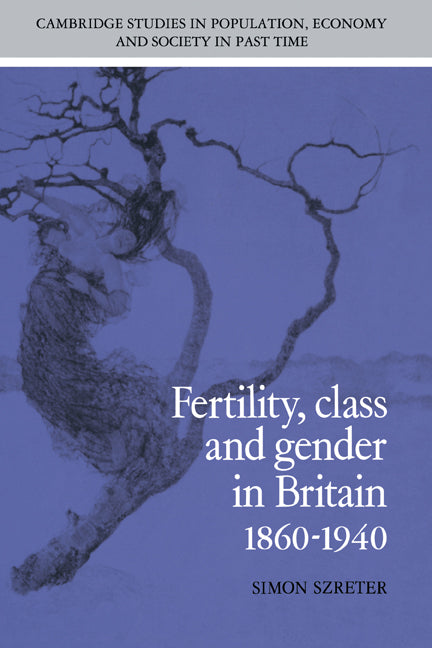Freshly Printed - allow 10 days lead
Couldn't load pickup availability
Fertility, Class and Gender in Britain, 1860–1940
A unique interpretation of falling fertility in Britain between 1860 and 1940, with new and surprising findings.
Simon Szreter (Author)
9780521343435, Cambridge University Press
Hardback, published 11 January 1996
726 pages, 15 b/w illus.
23.5 x 15.8 x 4.4 cm, 1.303 kg
'… required reading for anyone interested in the still unresolved debate over the nature and causes of the origins and process of the modern fertility transition.' English Historical Review
This book offers an original interpretation of the history of falling fertilities in Britain between 1860 and 1940. It integrates the approaches of the social sciences and of demographic, feminist, and labour history with intellectual, social, and political history. It exposes the conceptual and statistical inadequacies of the orthodox picture of a national, unitary class-differential fertility decline, and presents an entirely new analysis of the famous 1911 fertility census of England and Wales. Surprising and important findings emerge concerning the principal methods of birth control: births were spaced from early on in marriage; and sexual abstinence by married couples was a far more significant practice than previously imagined. The author presents a new general approach to the study of fertility change, raising central issues concerning the relationship between history and social science.
Introduction
Part I. Historiographical Introduction: A Genealogy of Approaches: 1. The construction and the study of the fertility decline in Britain: social science and history
Part II. The Professional Model of Social Classes: An Intellectual History: 2. Social classification of occupations and the GRO in the nineteenth century
3. Social classification and nineteenth-century naturalistic social science
4. The emergence of a social explanation of class inequalities among environmentalists, 1901–1904
5. The emergence of the professional model as the official system of social classification, 1905–1928
Part III. A New Analysis of the 1911 Census Occupational Fertility Data: 6. A test of the coherence of the professional model of class-differential fertility decline
7. Multiple fertility declines in Britain: occupational variation in completed fertility and nuptiality
8. How was fertility controlled? The spacing versus stopping debate and the culture of abstinence
Part IV. Conceptions and Refutations: 9. A general approach to fertility change and the history of falling fertilities in England and Wales
10. Social class, communities, gender and nationalism in the study of fertility change
Appendices
Bibliography
Index.
Subject Areas: Modern history to 20th century: c 1700 to c 1900 [HBLL], British & Irish history [HBJD1]


